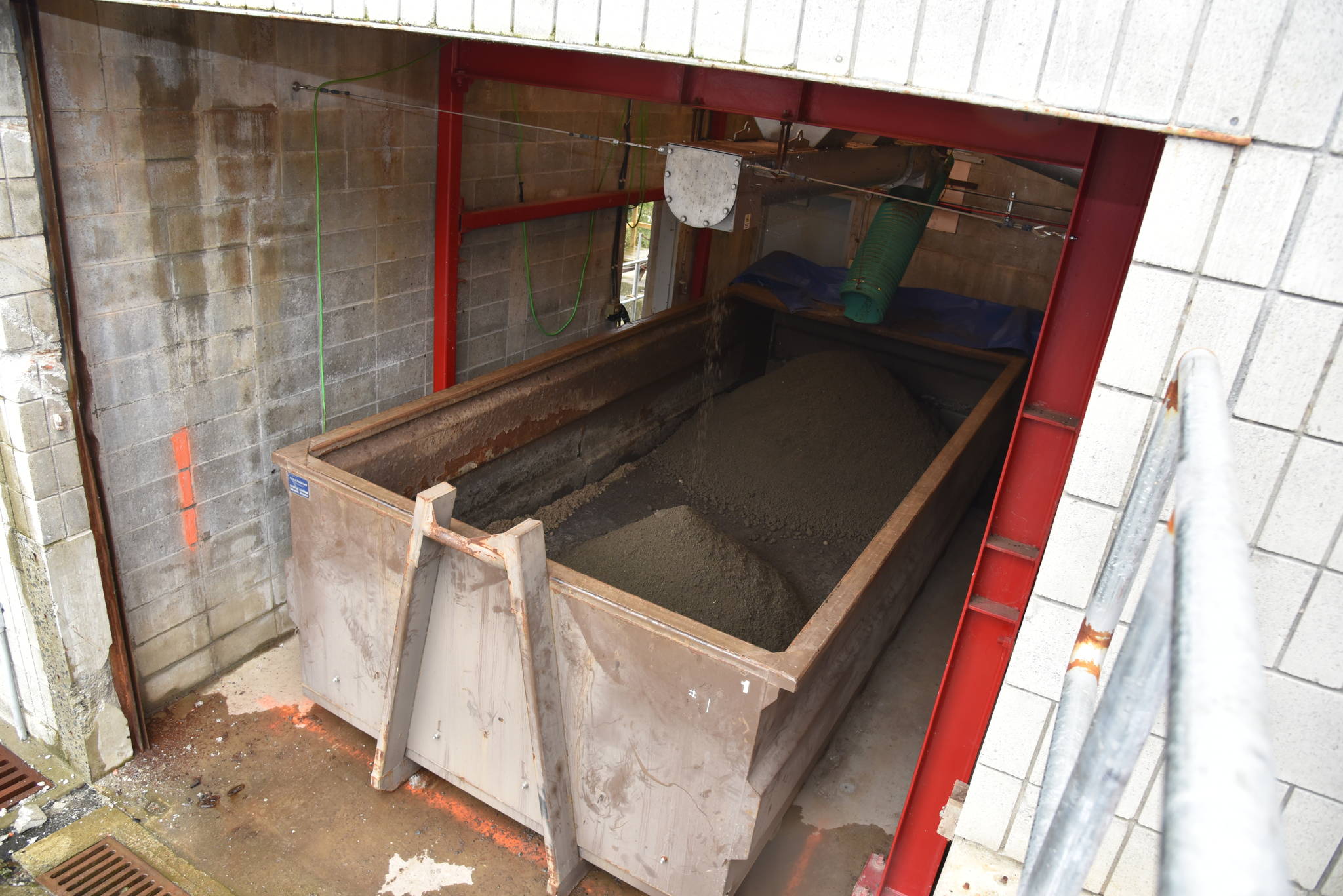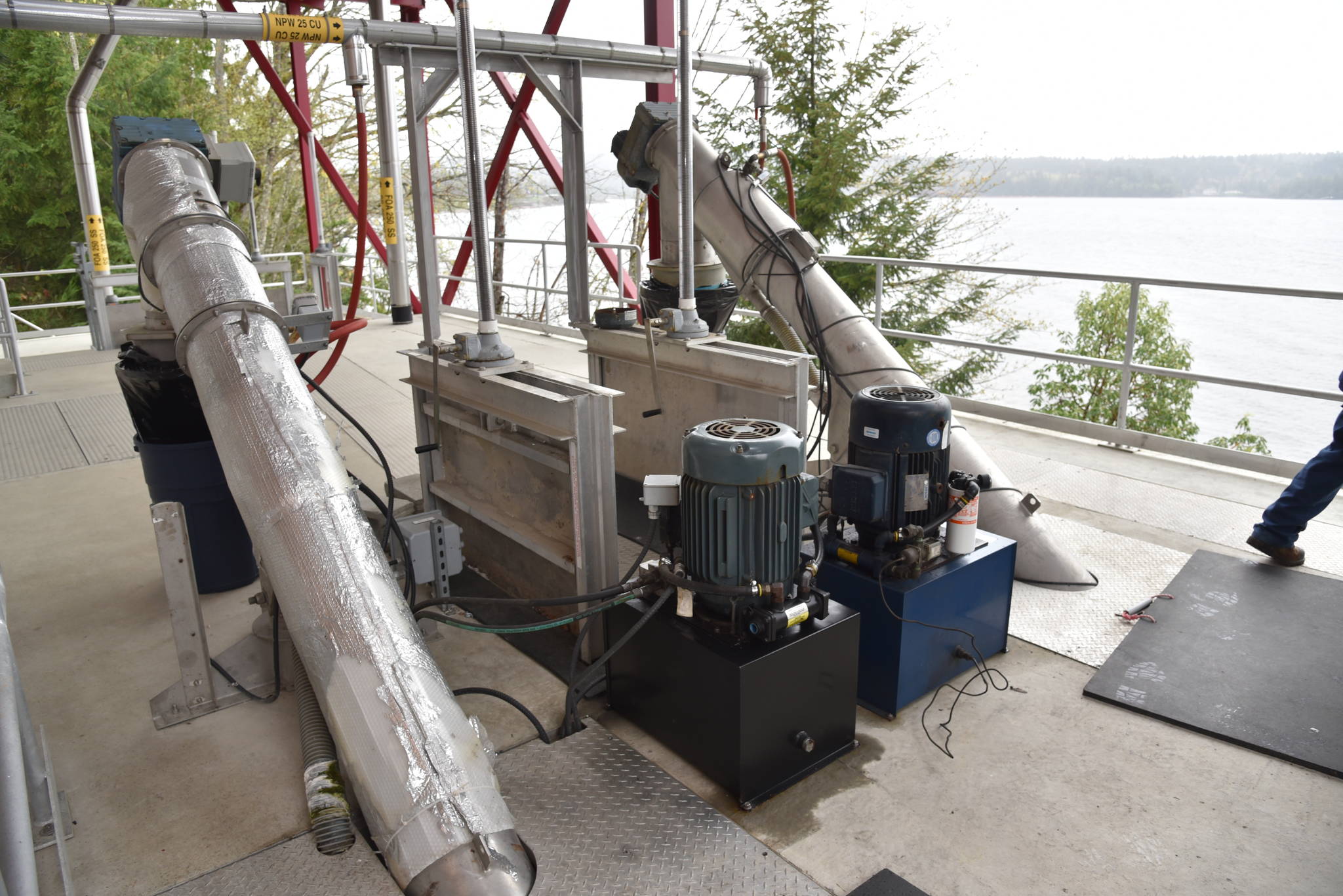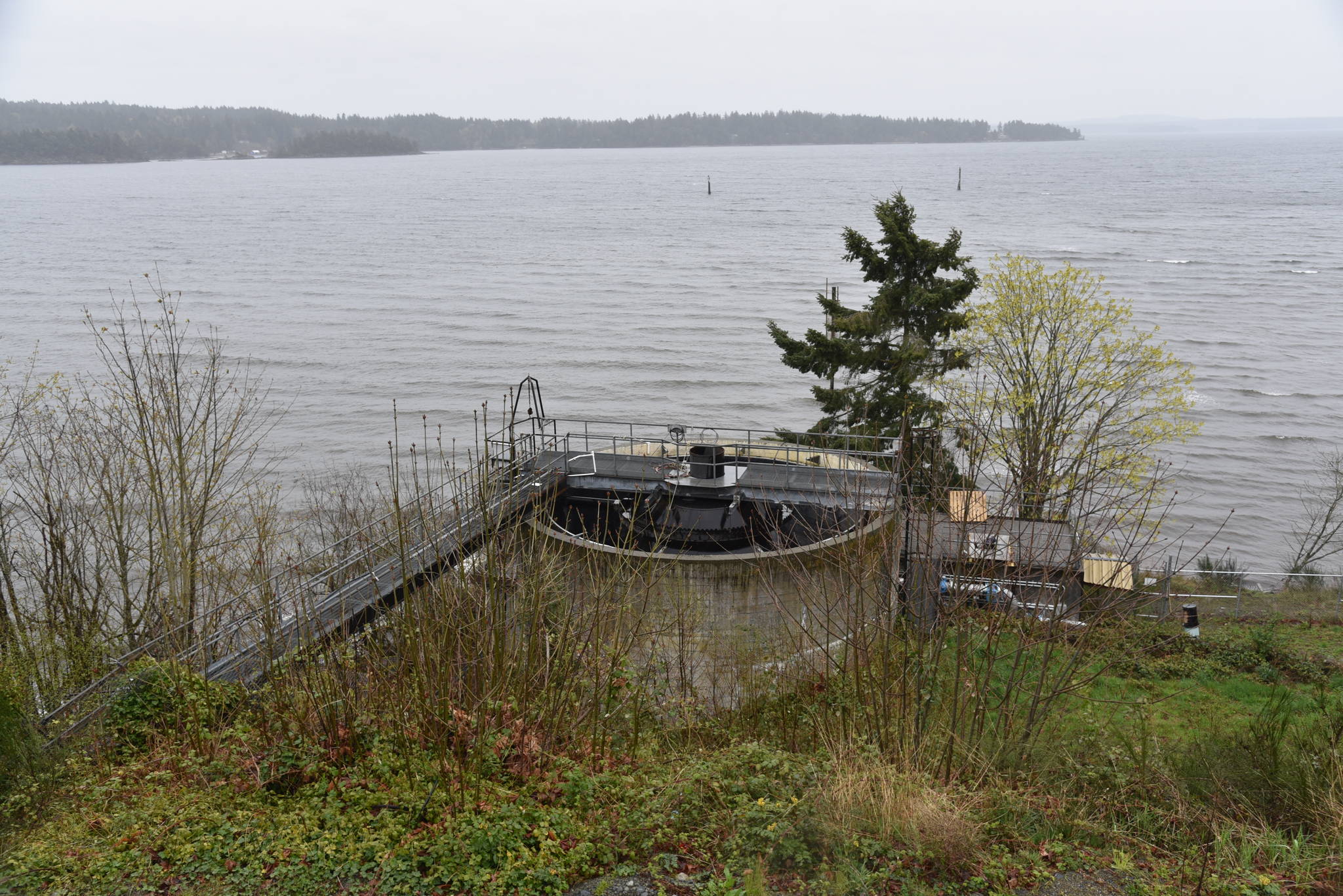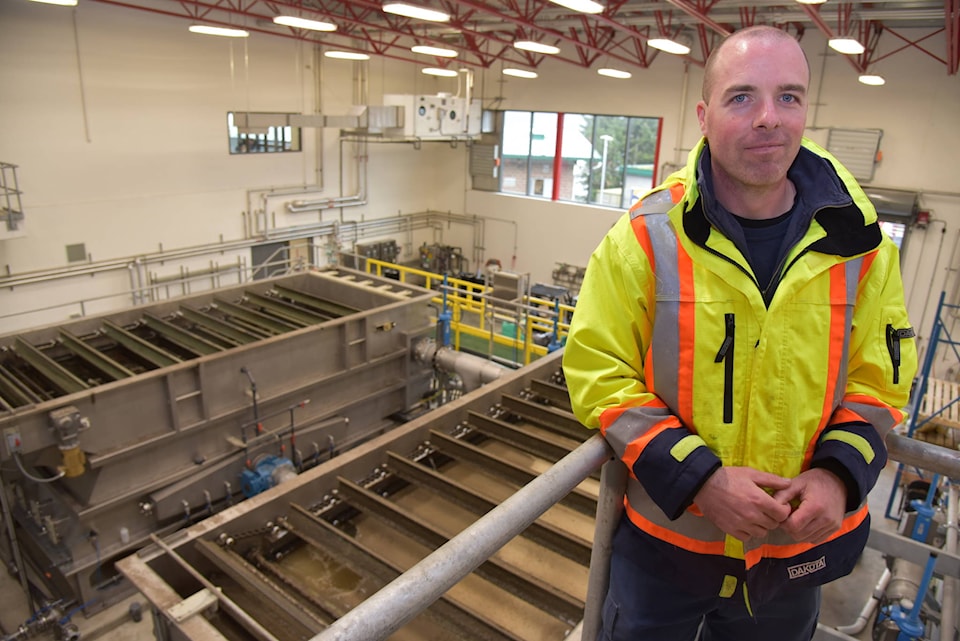Significant state-of-the-art upgrades to Ladysmith’s wastewater treatment plant completed last year have meant less sewage ending up in the harbour and now the engineering firm behind the project is being recognized for its design which is unique to Canada.
The sewage treatment facility sits down the road from a gated strata complex of million dollar homes overlooking the water on the south side of Transfer Beach.
With space at a premium and steep slopes adding to the challenge, Opus Engineering was driven to find more small-scale and efficient treatment option for the town’s sewage.
“It’s quite an unusual treatment plant in terms of these facilities are not that uncommon in other parts of the world but not in our neck of the woods,” said project director Al Gibb, pointing to examples in Europe, Quebec and the United States.
RELATED: Full steam ahead for Ladysmith’s new $1.8M biosolids facility
RELATED: Ladysmith receives $5.2 million to upgrade sewage treatment
Opus received an Association of Consulting Engineering Companies (ACEC) award for Engineering Excellence for its design, construction and commissioning of the local project.
In 2012, Ladysmith had already invested $5.5-million to ready its facility for moving from primary to secondary treatment, with the end result being a cleaner effluent quality. Federal funding in the amount of $5.2-million through the Gas Tax Fund then came through to help in the next phase of construction.
Near the end of 2013, Opus presented a design for installing a moving bed biofilm reactor (MBBR) - a Norwegian innovation involving thousands of plastic pieces roughly the size of marbles being churned in tanks.
Opus’ design manager for the project Seamus Frain said that the MBBR design is common in colder climates where a facility needs to be fully enclosed, as well as where where there’s limited space available.
“The tanks are full of small plastic media and these are constantly circulated through the wastewater,” he said. “Air is difused into the bottom of the tanks and the air and media are constantly interact and circulate through the wastewater.”
The standard for the majority of wastewater treatment plants is activated sludge with clarifiers but these facilities require larger tanks and therefore more space.
Even before reaching secondary treatment at the Ladysmith facility, sewage undergoes a complex process as it is first screened to remove grit and then moves to a rotating belt filter that was designed in Norway and again is unique compared to other more common systems.
In the secondary treatment process it then reaches the MBBR tank described above before moving onto the dissolved air flotation treatment process which skims away more oil and solids. All of this is housed in three buildings on the site.
“Secondary treatment is biological. You have a bio-reactor which is a huge culture of bacteria which is very good at scavenging the available ‘food’ from the wastewater,” Gibb explained.
Ladysmith’s entire facility is run by only a small handful of town employees who can oversee operations both on the ground and from a centralized monitoring room - also a complete overhaul to how things were run a few years back as the process now even involves lab testing.
Certified utilities operator Mike Brown was specifically hired on by the town after the switch to secondary treatment and said MBBR processes are designed to self-maintain at an optimum level of microorganisms.
“The big difference between other plants is that MBBR tank. That’s much different then most of the other designs out there,” he said. “It does make it an easier controlled process. It’s almost controlling itself in that tank.”
The final step for the effluent in the treatment process is be chlorinated, and then de-chlorinated, before being discharged into the harbour. The ‘solid’ material on the other hand, which looks more like wet sand, is transported to the new biosolids facility on Thicke Road where it is churned with wood chips into high-quality compost.
Ladysmith’s Liquid Waste Management Plan, stage 3 of which was also adopted in 2013, identified that wastewater discharge was impacting the marine environment, particularly shellfish, and there was a need the need to improve the effluent quality.
“The harbour is of great importance to us and it’s a shellfish harvesting area,” said director of infrastructure services, Geoff Goodall. “It’s always been one of our top priorities to ensure that whatever we are doing provided the best effluent quality possible.”
With primary treatment the town was really only screening material and liquid waste was being discharged into the harbour through an outfall pipe.
Frain said the upgrades to Ladysmith’s facility are a “quantum leap” compared to previous operations and now over 95 per cent of effluent is removed from wastewater.
“Much more effective. A really big step up in terms of effluent quality,” he said, crediting construction manager Roger Warren for his work on the project. “There are regulations driving this and the plant is designed to exceed that and is higher than what’s required by both federal and provincial governments.”
In fact, the facility, worked out so well that Opus has also recommended a very similar design for Trail, B.C., which has similar challenges in terms of space and wants a completely enclosed facility because of odour concerns.
The town hasn’t specifically tested to see exactly what impact the move to secondary treatment has had on the harbour but that study is on the books for 2020.
“It’s actually a fairly complicated piece because you can’t look at the town in isolation, it’s only one input into the harbour,” said Goodall. “If you’re doing a study of the harbour you need to look at all of the inputs to see the impact of everything because it’s a collective thing.”
To the north, wastewater from Cedar and area residents makes its way to the Regional District of Nanaimo’s Duke Point Pollution Control Centre which also uses secondary treatment; The Chemainus Treatment Plant, in part, uses the activated sludge treatment processes.
The total cost for the town’s wastewater treatment upgrades is estimated at $17.9-million and funded in part by a $10-million loan from the Green Municipal Fund as well as sewer reserves.
Ladysmith’s facility is also expandable to take into account future population growth and one of the MBBR tanks isn’t even in use at the moment.
Grant funding received through the construction phases also helped Opus and the town design a facility that is sustainable and has cut down on the operating costs now that it’s up and running.
The roof of one of the three buildings is almost completely covered with solar panels which can be viewed by satellite imagery on Google Maps, but it doesn’t stop there.
“We also extract heat from the treated wastewater and use that for space heating for the new buildings and again that’s an option we’re implementing more and more in plants because economically it makes sense to do it,” Frain said. “It’s a good source of heat on the one hand and for other climates it’s a good source of cooling.”
“We also recycle some of the treated effluent to use for certain washings and certain spray applications on the plant where you just don’t need to a high quality water form,” he added.
Mayor Aaron Stone said the town was delighted to hear the news that Opus had won an award for this “world class” facility.
“Completion of the new facility has significantly improved the quality of the wastewater effluent we discharge to the Ladysmith Harbour, reducing pollution levels and supporting the guiding principles of our Waterfront Are Plan, which places a strong emphasis on restoring the environmental health of local waters.”




